Related Research Articles
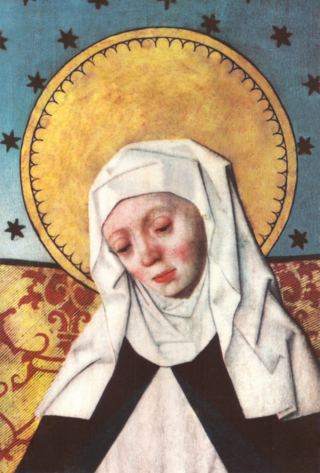
Bridget of Sweden, OSsS, born Birgitta Birgersdotter and also known as Birgitta of Vadstena, was a Swedish Catholic mystic and the founder of the Bridgettines. Outside of Sweden, she was also known as the Princess of Nericia and was the mother of Catherine of Vadstena.
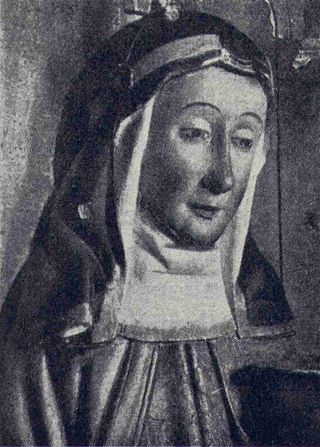
Catherine of Sweden, Katarina av Vadstena, Catherine of Vadstena or Katarina Ulfsdotter was a Swedish noblewoman. She is venerated as a saint in the Roman Catholic Church. Her father was Ulf Gudmarsson, Lord of Ulvåsa, and her mother was Saint Bridget of Sweden.

The Bridgettines, or Birgittines, formally known as the Order of the Most Holy Saviour, is a monastic religious order of the Catholic Church founded by Saint Birgitta in 1344 and approved by Pope Urban V in 1370. They follow the Rule of Saint Augustine. There are today several different branches of Bridgettines.
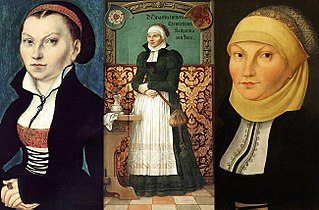
The status of Women in the Protestant Reformation was deeply influenced by Bible study, as the Reformation promoted literacy and Bible study in order to study God's will in what a society should look like. This influenced women's lives in both positive and negative ways, depending on what scripture and passages of the Bible were studied and promoted. The ideal of Bible study for commoners improved women's literacy and education, and many women became known for their interest and involvement in public debate during the Reformation. In parallel, however, their voices were often suppressed because of the edict of the Bible that women were to be silent. The abolition of the female convents resulted in the role of wife and mother becoming the only remaining ideal for a woman.

The Abbey Pax Mariae, more commonly referred to as Vadstena Abbey, is situated on Lake Vättern in the Roman Catholic Diocese of Stockholm and is a monastery of nuns within the Bridgettine Order. It was active from 1346 until 1595 and has been active since 1963, regaining status as an autonomous abbey in 1991.
Little Agda and Olof the Silent, refers to a legend about a young couple in Sweden between the very first years of King Gustav Vasa (1523) and the last years of before the Lutheran Reformation (1527).

St. Clare's Priory, Stockholm, was a Roman Catholic nunnery of the Poor Clares in Stockholm, Sweden that was active from 1289 to the Swedish Reformation in 1527.
Ingegerd Knutsdotter was a Swedish nun and noble, the first official abbess of the Bridgettine Abbey of Vadstena in 1385/88–1403.
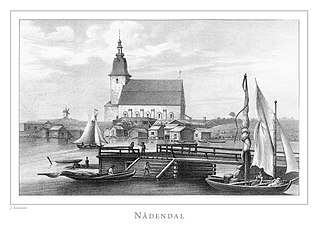
Nådendal Abbey, was a Bridgettine abbey in then-Swedish Finland, in operation from 1438 to 1591. The abbey was first situated in Masku, secondly in Perniö (1441) and finally in Naantali in 1443. It was one of six monasteries in Finland during the Middle Ages, and, as a double monastery, the only one which accepted women.
Katarina Bengtsdotter Gylta, in Latin: Catharina Benedicta, was a Swedish nun of the Bridgettine Order, Abbess of Vadstena Abbey in 1553–1564 and 1565–1593. She was the second last abbess in Sweden and Vadstena Abbey after the reformation.
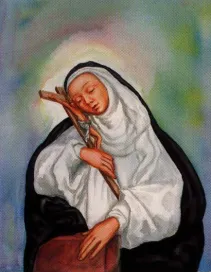
Ingrid of Skänninge was a Swedish prioress. She founded Skänninge Abbey, a nunnery belonging to the Order of Preachers, in 1272. Her feast day is on 2 September.
Gerdeka Hartlevsdotter, or Hartlefsdotter, also called Gerdica (1370–1438), was a Swedish Bridgettine nun. She was the abbess of Vadstena Abbey from 1403 until 1422.
Anna Paulsdotter, was a Swedish Bridgettine nun. She was the abbess of Vadstena Abbey from 1486 until 1496.

Vadstena adliga jungfrustift or VAJS, was a Swedish foundation to support unmarried female nobles.

Norrköping adliga jungfrustift was a Swedish foundation for the support of unmarried female nobles. It functioned as a stift or Protestant convent for unmarried female nobles from 1783 to 1796, situated in the city of Norrköping. Though formally a branch of the Vadstena adliga jungfrustift, it was in fact the only stift active in Sweden.

Riseberga Abbey, was a Cistercian nunnery in Sweden, in operation from circa 1180 until 1534. It was located near Fjugesta in Närke. It had the right to appoint the vicar of the Edsberg parish, which was under the jurisdiction of the abbey. The ruins of the buildings are preserved, and the Amphitheatre of the abbey are presently used as a Sylvan theater.

Skänninge Abbey, also known as St. Ingrid's Priory, was a convent for Dominican nuns in Skänninge in Sweden which existed from 1272 until 1544. It was founded by Ingrid of Skänninge, and as such, it was often referred to as St. Ingrid's Priory. Located near the church dedicated to Martin of Tours, it was originally named St. Martin's Priory, though this name was rarely used. The common name for it was Skänninge Abbey, but as there was also a convent for Dominican friars in Skänninge, it was often called Skänninge Nunnery.
Marienbrunn Abbey also called Fons Mariae and Triumphus Marie was a double convent for women and men of the order of the Bridgettines, situated in Gdańsk between 1391 and 1833. It was the first convent of the order founded outside of Sweden, and the second convent of the order altogether.
Karin Johansdotter, was a Swedish Roman Catholic nun of the Bridgettine Order. She was the last nun in Sweden after the Swedish Reformation.
Anna Germundsdotter or Girmundsdotter was a Swedish nun of the Bridgettine order and writer. She served as abbess of Vadstena Abbey from 1518 until 1529.
References
- Antiqvarisk tidskrift / Sextonde delen
- Signum svenska kulturhistoria: Renässansen (2005)
- Antiqvarisk tidskrift / Sextonde delen